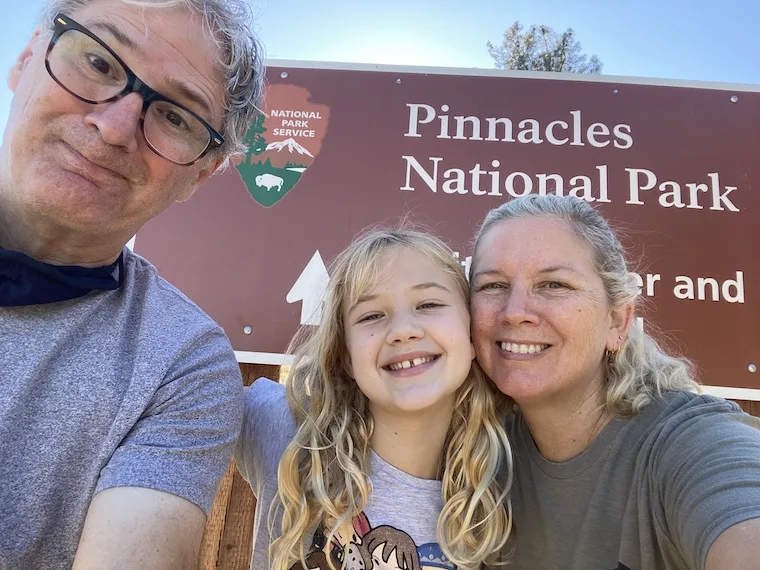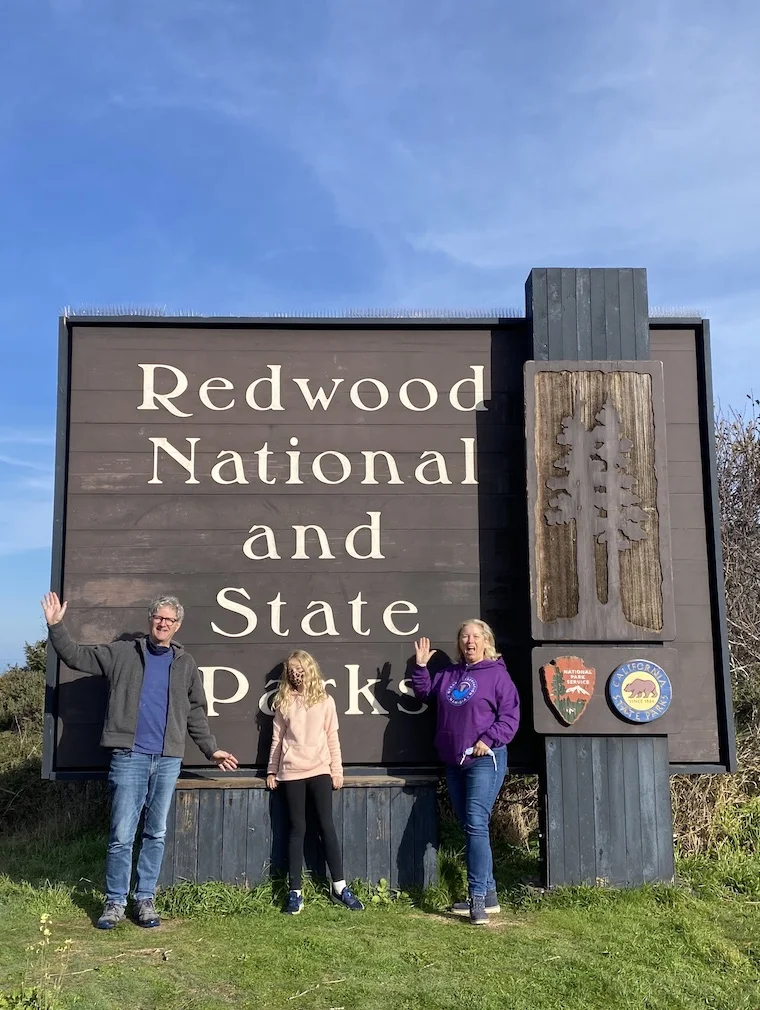Calling all 4th Graders (and their Parents)! The National Parks Want You!
The US National Park Service invites kids to discover amazing places and see nature in all its glory. And to make it easier, they provide a free pass to all fourth graders and their families. The program is called Every Kid Outdoors and gives “free access to hundreds of parks, lands and waters for an entire year.”
My daughter just started fourth grade here in Los Angeles and we love to travel. Since we wanted to do it as safely as possible, and since we also enjoy road trips, we set our sites on places we could go by car.
Cue the National Parks! They’re perfect in so many ways – outdoor fun, road trips (no flying), wide open spaces, amazing scenery, and maybe learning something along the way. (Shhh, don’t tell my daughter that part!) And you’ll save some money too.
The program starts on September 1 for each year’s fourth grade cohort and the free pass lasts until August 31 of next year. Plenty of time to look at maps and make a plan. Go to their website and fill out the mini questionnaire with your fourth grader and at the end, you’ll get a pass that you can print, like this one pictured. (Note: on your first visit to a park, you can exchange it for a plastic membership card.)

Their website has a wealth of information, and even has a trip planning tool, with ideas on where you can explore, discover your first trip, where to stay, what to pack and how to have a safe trip, among many other things.
About America’s National Parks
America’s National Parks are “the best idea we ever had. Absolutely American, absolutely democratic, they reflect us at our best rather than our worst,” according to Wallace Stegner, writer and historian. It’s hard to disagree when We The People have worked hard to build a spectacular collection of parks that are open and available to everyone. Some of our country’s most stunning geography is protected and preserved, and most importantly, open for us all to experience.
Do you know which was the first National Park? That honor goes to Yellowstone National Park in Wyoming, established in March of 1872. A short while later, California’s very own Sequoia and Kings Canyon was established in September of 1890, followed quickly by Yosemite in October of 1890. (As a side note to my personal history, having grown up on Maui, I was pleasantly surprised to find that Haleakala and Volcano National Parks in Hawai’i were among the earliest established, both in 1916.)
1916 is also when the National Park Service itself was established to oversee and manage the parks and park system. Their role is to not only manage each park day to day but also to recommend potential new parks and monuments to Congress.
Related: Find the amazing Ken Burns documentary series about the National Parks on Amazon (via our affiliate link).

National Parks Are Still Being Created
New parks and monuments are being added every few years. The newest National Park is Ste. Genevieve National Historic Park, established in October 2020 as the 422nd National Park. Ste. Genevieve was the first European settlement in what is now Missouri, settled mainly by French colonials via Canada, Louisiana and France. Its history represents a unique melting pot of settlers.
Related: 10 Reasons to take your kids camping
National Park vs. National Momument
You might wonder, as I did, what is the difference is between a National Park and a National Monument? Here’s the explanation from the National Park service site:
“National Parks are areas set apart by Congress for the use of the people of the United States generally, because of some outstanding scenic feature or natural phenomena. National Monuments, on the other hand, are areas reserved by the National Government because they contain objects of historic, prehistoric, or scientific interest.“
National Monuments run the gamut from The Statue of Liberty to Mount Rushmore to the Harriet Tubman Underground Railroad. They also include coral reefs and fossil sites.
More fun National Park facts!
- The biggest park: Wrangell-St. Elias National Park and Preserve (Alaska). Yellowstone is huge – 2.2 million acres. But Wrangell-St. Elias is gigantic! 13.2 million acres!
- The smallest park: Hot Springs National Park (Arkansas), comes in at just 5550 acres.
- The busiest park: Great Smoky Mountains National Park (Tennessee and North Carolina)
- The lowest park: Death Valley National Park (California), 282 feet below sea level.
- The highest park: Denali National Park and Preserve (Alaska). Denali was originally named Mt. McKinley after the President, but its original name was restored in 2015 to the native Athabascan name
National Parks in California
At this point you might be thinking “Cool cool cool, but uh Alaska is a pretty far drive and I’ve already been to Death Valley.” The good/amazing news is that within a 5-hour drive from Los Angeles you can find 15 parks, monuments, or historic sites to explore (in alphabetical order):
- Cabrillo National Monument
- Castle Mountains National Monument
- Cesar E. Chavez National Monument
- Channel Islands National Park
- Death Valley National Park
- Devils Postpile National Monument (this might be more like 5 ½ hours)
- Santa Monica Mountains National Recreation Area
- Joshua Tree National Park
- Kings Canyon National Park
- Manzanar National Historic Site
- Mojave National Preserve
- Old Spanish National Historic Trail
- Pinnacles National Park
- Sequoia National Park
- Yosemite National Park
Click here to see all the parks in California.

Road Trip Basics for Seeing the National Parks
If you jump on the National Park bandwagon this coming year (with or without a fourth grader), a great way to record your adventure is with a park journal. There are a wide variety to choose from here in our Amazon store. Or you can make your own and decorate with park decals, patches and pins found on a site called America’s National Parks, which is not part of the National Park service, but they do donate proceeds to support the parks. They even have passport type journals, as well as Junior Ranger activity books, plus toys and games.
As you plan your drive, don’t forget to load up your electronic devices with great kid friendly Podcasts. We love the Tumble podcast that has fun science stories for kids (that us grown-ups enjoy as well!) and Story Nory with a variety of stories for all ages.
Don’t forget about your public library! Download the Hoopla app, connect it to your library account and borrow/download audio books. When it’s time for a break from the electronics in the car, try some good old fashioned road trip games!
Related: Read about the Los Angeles Public Library and all it has to offer.
Also, ask the grandparents to come along! Anyone over the age of 62 can get an annual pass for $20 or a lifetime pass for $80. Each pass includes three other people so the whole extended family can save $$ on adventure. The Senior pass also includes other park discounts for further savings. How much can you save with your free pass? A vehicle pass for most of the major parks (valid for 1-7 days and includes everyone traveling in a single vehicle) is between $20 and $35.
Adventure is waiting! We hope you get out there and enjoy America’s National Parks – or at least the ones here in California!
This is a guest post by Julia Frey, author of Julia’s Mexico City. Despite the website’s name, Julia is a Los Angeles Mom. Her daughter Harper helped her try geocaching.


